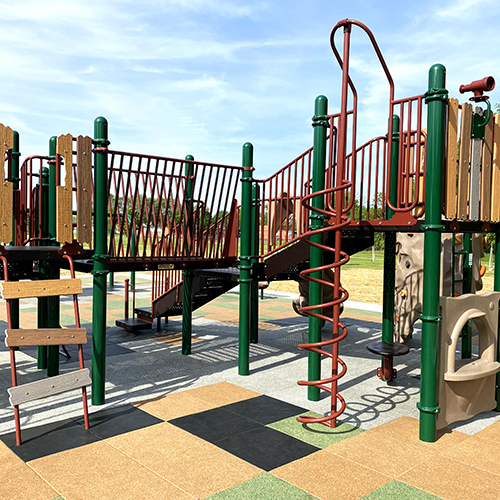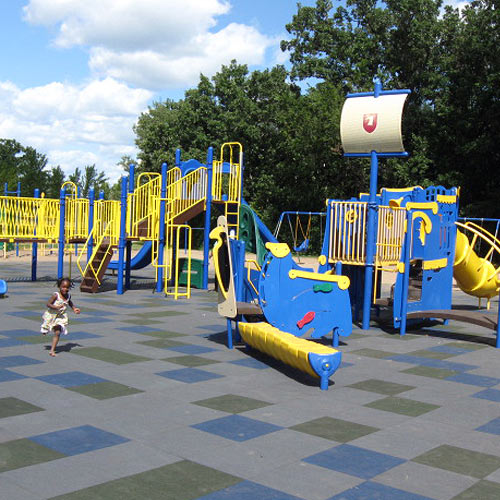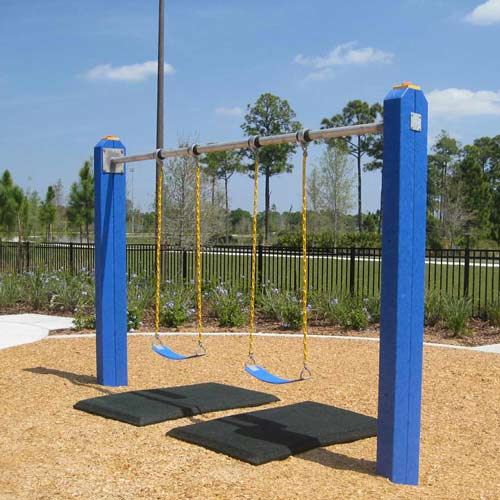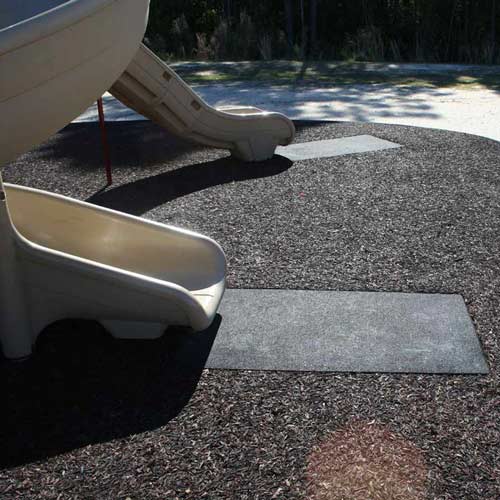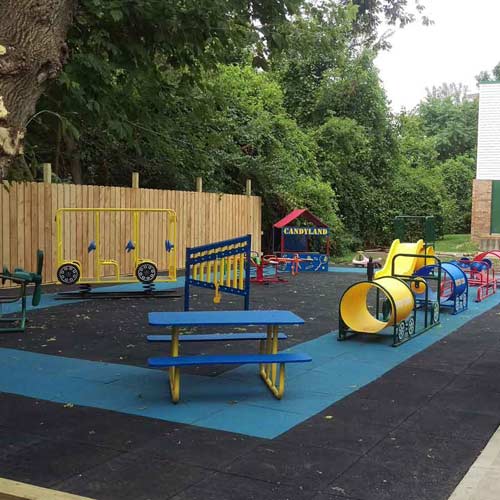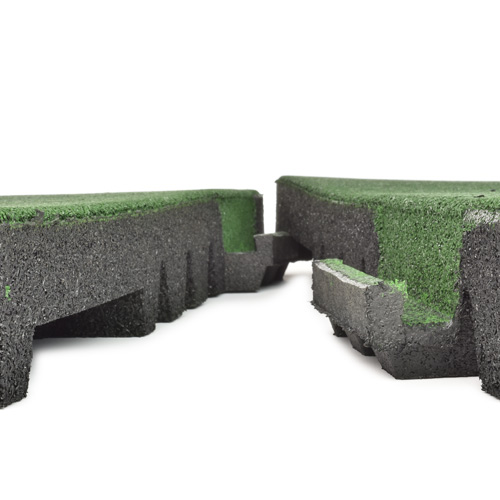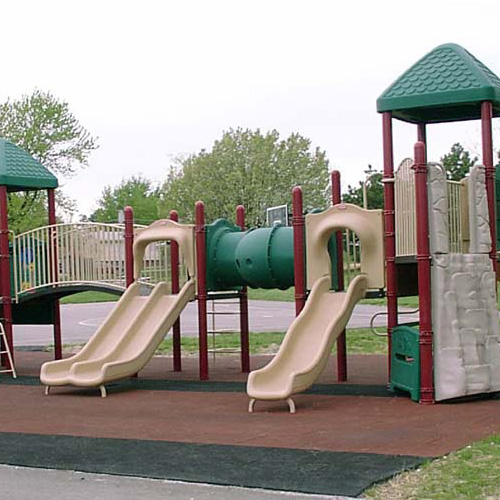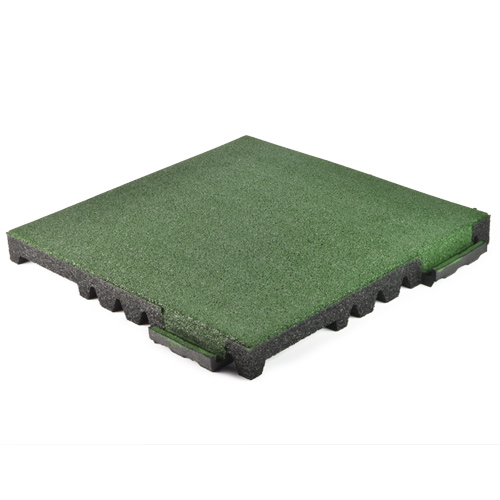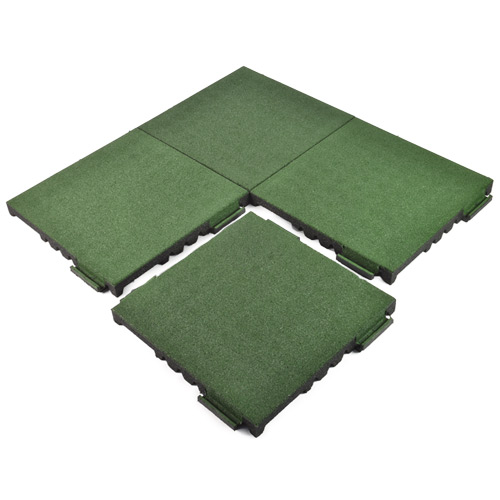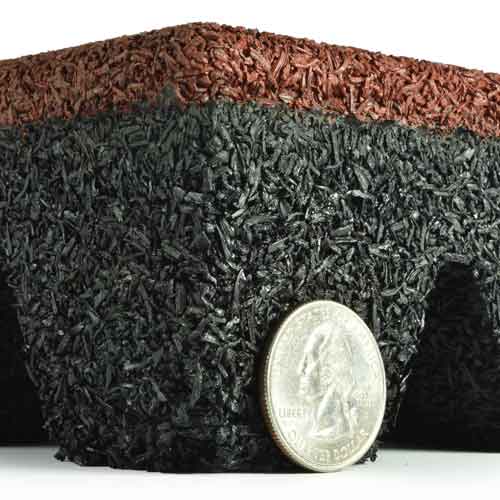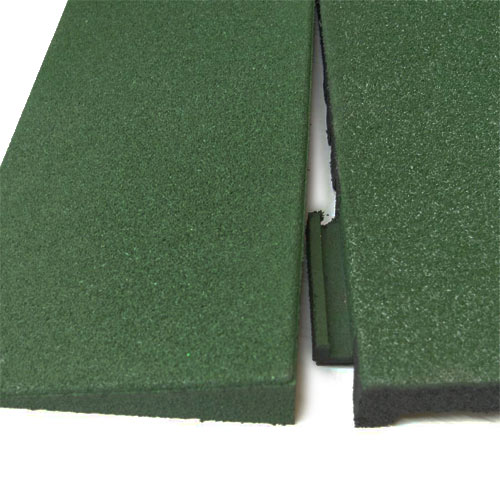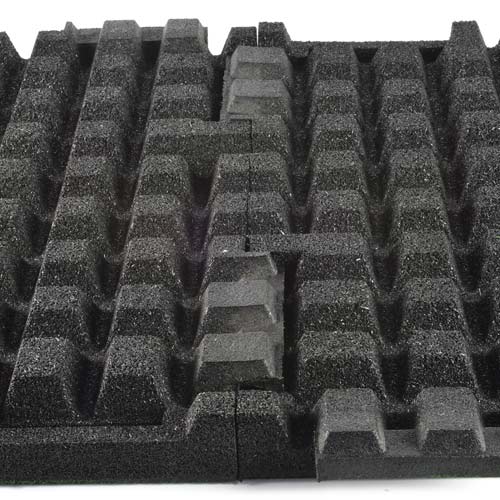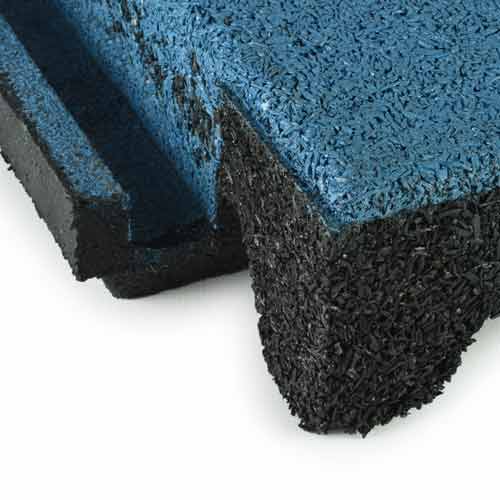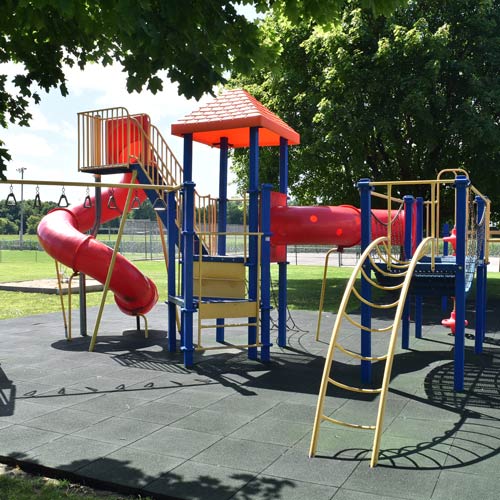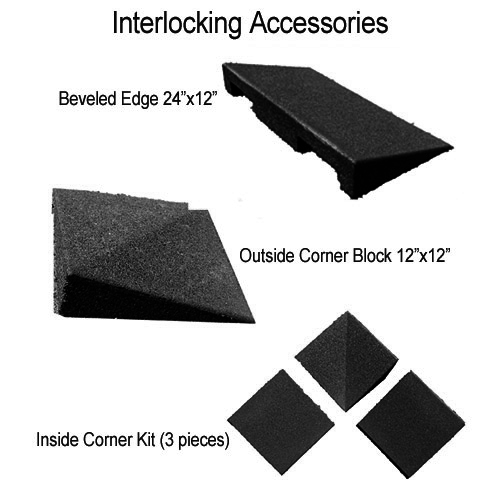Playground Mats vs. Mulch - The Advantages and Disadvantages of Each
Related Product: Sterling Playground Tile 35% Premium Colors 4.25 Inch x 2x2 Ft.
Mulch
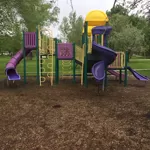 Mulch can come in many forms and is generally an inexpensive form of playground surfacing. Let's compare rubber mulch vs. wood mulch.
Mulch can come in many forms and is generally an inexpensive form of playground surfacing. Let's compare rubber mulch vs. wood mulch.
Wood chips, shredded bark mulch, and engineered wood fibers are environmentally friendly, biodegradable, and renewable natural resources. They'll also give your playground a natural look and feel.
Of these materials, wood chips provide the most fall height protection, ranging from 7 to 11 feet with uncompressed depths of between 6 and 12 inches, respectively. Compression does not greatly affect the fall height protection of wood chips but does lessen the protective benefits of both shredded bark mulch and engineered wood fibers. All forms of wood mulch perform better for fall protection than hard particles of loose fill, such as sand or pea gravel.
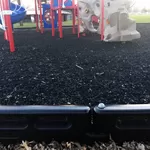 Rubber playground mulch is generally made of ground-up tires, extending the useful life of millions of pounds of materials that would otherwise end up in landfills. They also reduce fungus and plant growth in your playgrounds, creating a weed barrier. Here are some rubber mulch for playgrounds pros and cons.
Rubber playground mulch is generally made of ground-up tires, extending the useful life of millions of pounds of materials that would otherwise end up in landfills. They also reduce fungus and plant growth in your playgrounds, creating a weed barrier. Here are some rubber mulch for playgrounds pros and cons.
The elasticity of rubber mulch is excellent for shock absorption and is far superior to wood or bark mulch in breaking falls, providing 10-12 feet of fall height protection with an uncompressed depth of 6 inches. This material will also last up to 12 times longer than wood mulch, decreasing the maintenance and replacement costs.
Unfortunately, recycled tire mulch can contain trace chemicals from the manufacturing process and use on vehicles. With that being said, the Environmental Protection Agency has endorsed the use of recycled rubber for playgrounds after research determined the materials not to be harmful. Those findings have been backed by multiple other studies.
A downside to loose-fill playground surfaces is that they will need a retaining barrier to be installed in order to keep the fill from spreading away from the play area. Even with a barrier, loose fill will disappear over time (in pockets, shoes, and spillage over the barriers) and will need constant additions or replacements, especially in the case of wood mulches, which will break down over time.
Thickness of loose fill surfaces can and will vary with use, as it will be displaced from the impact of children coming off slides, swinging on swings, falling, etc. It can also be affected by wind, heavy rains, or other extreme environmental conditions. Loose fill can hide potential dangers, such as screws, nails, broken glass, or syringes, and should not be installed over a hard surface like concrete. There is no good way to clean loose fill, especially wood mulches, which attract insects and can develop mold and fungus when wet. Wood mulch can also contribute to scrapes and splinters, especially when dry.
Playground Mats and Tiles
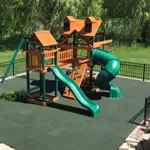 While more expensive to start, rubber playground mats and tiles are durable, easy to create designs or patterns with, and easy to maintain. They will not need any form of containment and are more handicap accessible than loose-fill playground surfaces. The material will not shift or displace, and any potential danger from sharp objects will be exposed on the flat surface. Mold, fungus, and insects are not an issue with rubber playground flooring.
While more expensive to start, rubber playground mats and tiles are durable, easy to create designs or patterns with, and easy to maintain. They will not need any form of containment and are more handicap accessible than loose-fill playground surfaces. The material will not shift or displace, and any potential danger from sharp objects will be exposed on the flat surface. Mold, fungus, and insects are not an issue with rubber playground flooring.
Should a rubber playground mat surface need to be cleaned, it can be easily done with a broom or garden hose. Like rubber mulch, rubber interlocking playground tiles and mats are also made of recycled tires and have been known to last for decades. Some even feature warranties of 10 years or more, and you can get rubber playground tiles cheap without sacrificing quality.
Should playground mats or tiles become damaged, they are typically easy to replace with a new tile.
As for fall height protection, you'll want to check with each manufacturer, as they can vary depending on design and thickness. At Greatmats, you can find rubber playground mats that are up to 5 inches thick with fall height protection of up to 10 feet.
Sometimes confused with rubber mulch mats, rubber playground mats have stricter requirements for proper installation. Improper installation can result in tripping hazards and a decreased lifespan of your playground surface. Many rubber mats and tiles interlock, preventing seams from separating or displacing, making these excellent interlocking playground mats for under swings. Rubber playground mats are also heavy and will not float or freeze, making them extremely resilient, even in extreme weather conditions.
As you can see, not all playground surfaces are created equal. Don't be fooled by cheap playground flooring. It's not always cheap in the long run. When choosing your surface, make sure to consider how heavily the space will be used, the environment in which it will be installed, upfront cost, maintenance, repair, and replacement costs. This will help ensure children will have a fun and positive experience on your playground. By reading this, you're on the right path to protecting both your children and your pocketbook.
